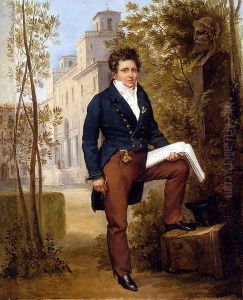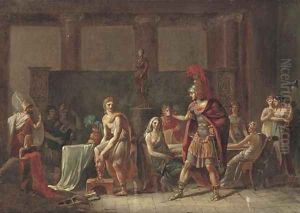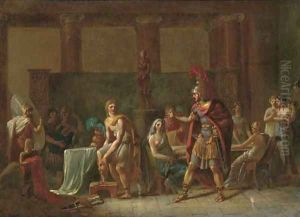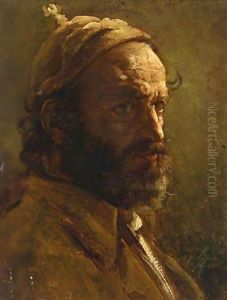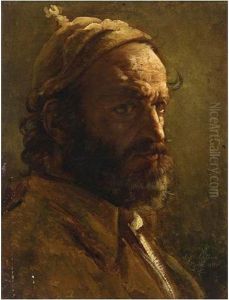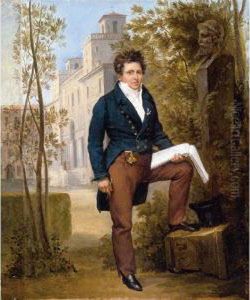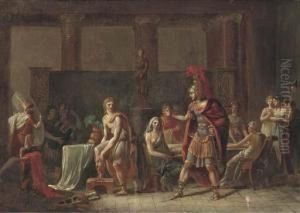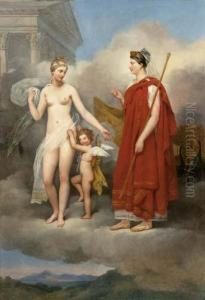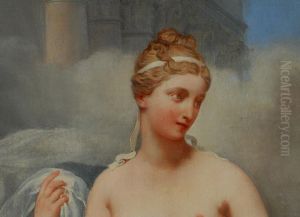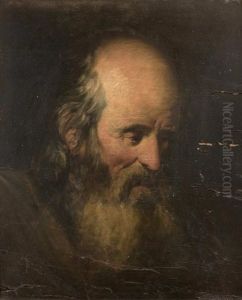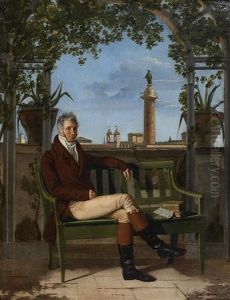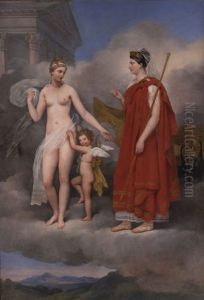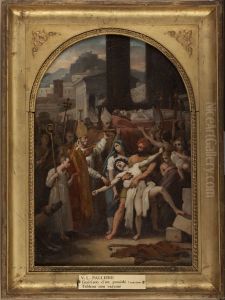Louis-Vincent-Leon Palliere Paintings
Louis-Vincent-Léon Pallière was a French painter known for his historical and mythological scenes. Born on September 2, 1787, in Bordeaux, France, Pallière came from an artistic family; his father, Guillaume Guillon Lethière, was also a renowned painter. Despite the turmoil of the French Revolution and the Napoleonic Wars during his lifetime, Pallière pursued an artistic career, which was not uncommon in his family lineage.
Pallière showed an early talent for the arts and was initially taught by his father. He then continued his studies at the prestigious École des Beaux-Arts in Paris. His dedication to his craft and his classical style of painting were influenced by the Neoclassical movement, which was dominant during his formative years. This movement sought to return to the classical art forms of ancient Greece and Rome, emphasizing clarity, order, and balance.
In 1812, Pallière won the coveted Prix de Rome for his painting 'The Death of Socrates.' The Prix de Rome was a French scholarship for arts students, particularly painters and sculptors, that was established during the 17th century. Winners were awarded a bursary that allowed them to stay in Rome for three to five years to study and further their education in the arts at the expense of the state. This accolade was a significant milestone in an artist's career and offered Pallière the opportunity to refine his skills and gain inspiration from the rich artistic heritage of Italy.
While in Rome, Pallière continued to develop his style, often focusing on antiquity and religious themes, which were popular among the European academies at the time. His works were characterized by their dramatic compositions, use of light, and a palette that often included rich, somber tones to convey the gravity of his subjects.
Tragically, Louis-Vincent-Léon Pallière's life and career were cut short when he died at the young age of 33 on March 19, 1820. His early death meant that his body of work was not as extensive as that of his contemporaries, but his contributions to French Neoclassical painting were still significant. Although not as widely remembered as other artists of his era, Pallière's works remain a testament to his skill and the artistic values of his time.
